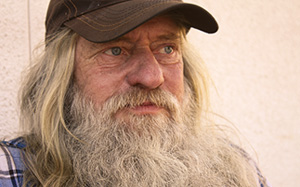It’s Alive! Frankenstein at 200
As Frankenstein turns 200, San Jose State explores the complex relationship between the humanities, science and technology.
On a stormy night on Lake Geneva in June 1816, a ghost story writing competition between Mary Wollstonecraft Shelley, her husband Percy Bysshe Shelley and Lord Byron resulted in one of the most famous works of imagination in history. Frankenstein; or, the Modern Prometheus was published in 1818, and 200 years later the story is still alive.
The Frankenstein Bicentennial has brought together faculty members and students in classrooms, lecture halls and theaters at San Jose State. The year of programming has helped to launch San Jose State’s College of Humanities and the Arts’ exploration and integration of “deep humanities,” which includes the ethical, artistic and imaginative approaches to the creation of and interaction with technology.
As part of the international Frankenreads celebration, San Jose State is collaborating with Santa Clara University and University of San Francisco on panel discussions, performances, curated exhibits and ongoing blog coverage cross-promoted on the three campuses. Funded by the National Endowment for the Humanities, Frankenreads has also brought together more than 400 universities around the world to encourage dialogue around the literary masterpiece.
Professor of English Katherine Harris, who is leading the Frankenstein Bicentennial collaboration for San Jose State, says “there are philosophical and ethical dilemmas in Frankenstein that we can take away as readers of literature”—whether you’re reading or re-reading the original version of Frankenstein or have seen a movie that’s an adaptation of it.
“The novel is both prescient and immensely timely for us living in Silicon Valley,” says Shannon Miller, dean of the College of Humanities and the Arts. Miller is a scholar of Renaissance English literature, especially John Milton and seventeenth-century woman writers. “Some of the most important questions of our time were anticipated by the story of Dr. Frankenstein’s creature—from privacy rights and the manipulation of social media for political purposes to the role of artificial intelligence in our lives and futures.”
What happens when a man attempts to outmaneuver nature and create life?
Different Perspectives
Humanities and the arts have a different perspective than working technologists, programmers, designers and software engineers, says Harris, a deep humanities expert who has studied Frankenstein extensively. “We just want to be able to take a look at what’s going on in the world right now and have intellectual debates and conversations about humanities, science and technology.”
A major theme in Frankenstein is tolerance of difference. When the primary character Victor Frankenstein succeeds in creating life, he constantly grapples with his own decisions, but also his own ego, Harris says. He starts out wanting to be a philanthropist, to create a creature who is superhuman and immune to disease because he lost his mother to a very simple disease. The creature ends up being a representation of humanity that couldn’t be controlled. Only when Victor Frankenstein realizes he’s brought to life an uncontrollable seven-foot-tall creature does the creator become afraid.
The original wasn’t a creature with bolts in his neck or a square head. In the first published images of him, he’s handsome. Shelley’s creature is also a genius. (It was the 1824 play Presumption—an adaptation that also supplied hump-backed assistant Igor—that recast the creature as ugly and stupid.) Impervious to cold, and apparently vegetarian, the creature also murders five people in cold blood. Early in the novel, Victor Frankenstein decides the creature is inherently evil—a judgment that sticks. Victor condemns the creature without ever listening to him.
“Today, we get into that mode with political conversations. We are very polarized in the way we speak. One of the beauties about reading literature is that we can see examples of what that polarization does,” explains Harris. “Reading the novel, reading Mary Shelley’s beautiful sentences expressing extreme emotion creates pathos for readers. We understand the characters’ emotional states as well as their philosophical and ethical positions.”
How are artificial intelligence and other emerging technologies redefining what it means to be human in the digital age?
The anniversary of Frankenstein’s publication has intersected perfectly with the growing anxieties around how technology works and what control we actually have over it, says Miller. “We have seen the Cambridge Analytica crisis and Russian interference in our elections rock a company like Facebook and lead to Congressional hearings over what protections we need around technology that surrounds and increasingly shapes our daily lives.”
In the 20 years that Harris has been teaching the novel, she says that “because the monster is so grotesque in popular culture, students are astounded by the original depiction. They also have much more empathy for the creature than they thought they would. By the end of our time with Shelley’s novel, students inevitably sympathize with the creature and hate Victor Frankenstein. They think of the creature as a victim of circumstance.”
It’s really engaging to talk to students about these kinds of issues, says Harris. “And I think that’s what San Jose State has brought to the conversation for Frankenreads, for biomedical ethics and for deep humanities. Our students and faculty members have been engaged in this conversation. And they definitely have something to say about it.”
Being Human Today
All too often, the humanities and arts are reduced to “soft skills,” “business ethics” and “product design,” while the humanistic traditions of creativity and contemplation are appropriated to boost productivity and profit, says Revathi Krishnaswamy, professor of English. “But as technology changes what it means and how it means to be human, we need to redefine the relationship between the humanities, arts and tech, integrating and embedding the humanities deeply into every aspect of tech—from conception, design and development to use, abuse and disposal.”
What role can the humanities play in making technological innovation human-centered?
Parallel to the notion of deep learning in computer science, the concept of deep humanities deals with the deep structures of culture, communication and interpretation, networks of affect, belief and bias, representations of cognition and consciousness, as well as theoretical models of ethics, aesthetics and humanism.
“Silicon Valley’s tech titans have not only dazzled us with their brilliant technological inventions and innovations, but also captivated us with their idealistic talk of social justice and utopian visions of a brave new world,” says Krishnaswamy. “For decades, the immense economic, political and cultural power of Silicon Valley has gone largely unquestioned.”
But the alarming invasion of privacy, “fake news,” sexual harassment and discrimination, Krishnaswamy says, has raised a number of urgent questions about the valley’s tech titans: Is Silicon Valley really promoting social justice or rapidly widening the gulf between the haves and the have-nots? Are tech titans optimizing for profit and disrupting for dominance at the expense of democracy, civility, morality, ethics and empathy?
“This is a moment where scientists should get out of their silos to engage with us,” says Janet Stemwedel, chair of SJSU’s philosophy department. “Scientists are part of the human community. In bringing new knowledge and tools to the table, scientists don’t bear sole responsibility for recognizing or addressing real-world conditions that influence their use, misuse, or foreseeable effect, but scientists are not free to say those real-world conditions are someone else’s problem. These are shared problems. Scientists, ethicists and the public at large should work out how to share them.”
Stemwedel, who holds doctorates in philosophy and in chemistry, has written about issues in ethics in science for outlets including Forbes, Scientific American, and ScienceBlogs.com. In 2017, she was elected a Fellow of the American Association for the Advancement of Science in recognition of distinguished contributions to the philosophy of science and ethics, and for exceptional efforts to promote the public understanding of science and scientists in culture.
“Taking account of ethics can do more than protect against the potential harms of scientific knowledge and tools. Serious engagement with ethics could have positive impacts on how we structure science—on distribution of research funds, scientific credit, on the incentives for pursuing certain kinds of scientific questions or for sharing data and protocols. At present within scientific practice there are significant tensions between individual incentives and practices that support robust knowledge-building. Ethicists have helped identify these tensions—and described alternate arrangements that would reduce them—which would lead to better knowledge-building,” says Stemwedel.
What happens when a man attempts to outmaneuver nature and create life? What are the implications and responsibilities of those in the fields of science, technology, humanities and the arts today in Silicon Valley, 200 years after Mary Shelley crafted her timeless tale?
“That’s why we are having deep humanities discussions—we’re stumped,” says Harris.





